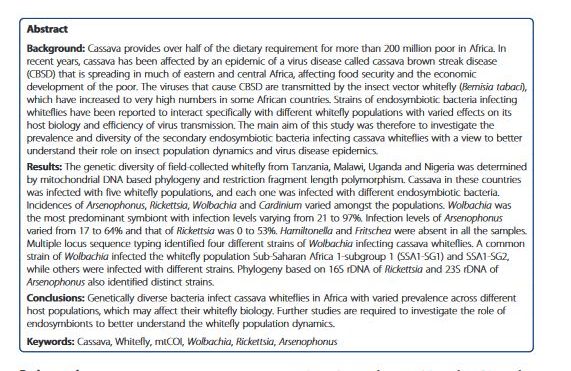Cassava provides over half of the dietary requirement for more than 200 million poor people in Africa. In recent years, cassava has been affected by an epidemic of a viral disease called cassava brown streak disease (CBSD) that is spreading in much of Eastern and central Africa, affecting food security and the economic development of the poor. The viruses that cause CBSD are transmitted by the insect vector whitefly (Bemisia tabaci), which have increased to very high numbers in some African countries. Strains of endosymbiotic bacteria infecting whiteflies have been reported to interact specifically with different whitefly populations with varied effects on host biology and the efficiency of virus transmission. The main aim of this study was therefore to investigate the prevalence and diversity of the secondary endosymbiotic bacteria infecting cassava whiteflies with a view to better understand their role in insect population dynamics and virus disease epidemics. Genetically diverse bacteria infect cassava whiteflies in Africa with varied prevalence across different host populations, which may affect their whitefly biology. Further studies are required to investigate the role of endosymbionts to better understand the whitefly population dynamics.
Region: Africa
Date published:
2015
Published by:
BMC Microbiology
Type of resource:
Journal article
Resource topic:
Cassava
Project/Programme: Not specific
Pest/Disease: Cassava brown streak virus, Whitefly
File type:
External link (2,971 KB)




